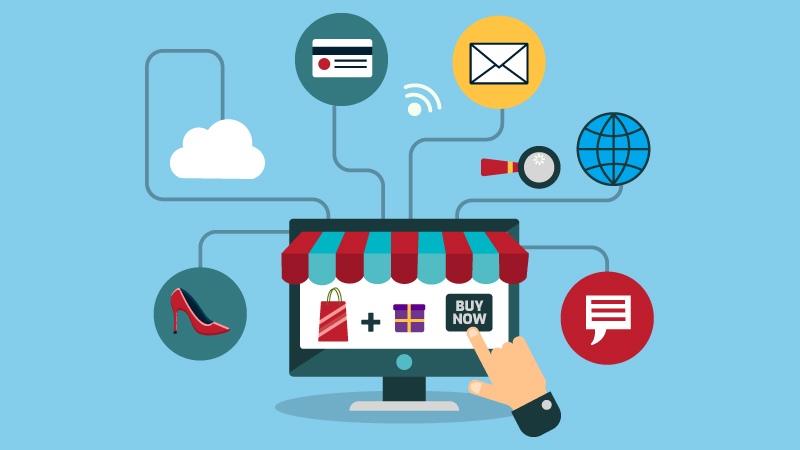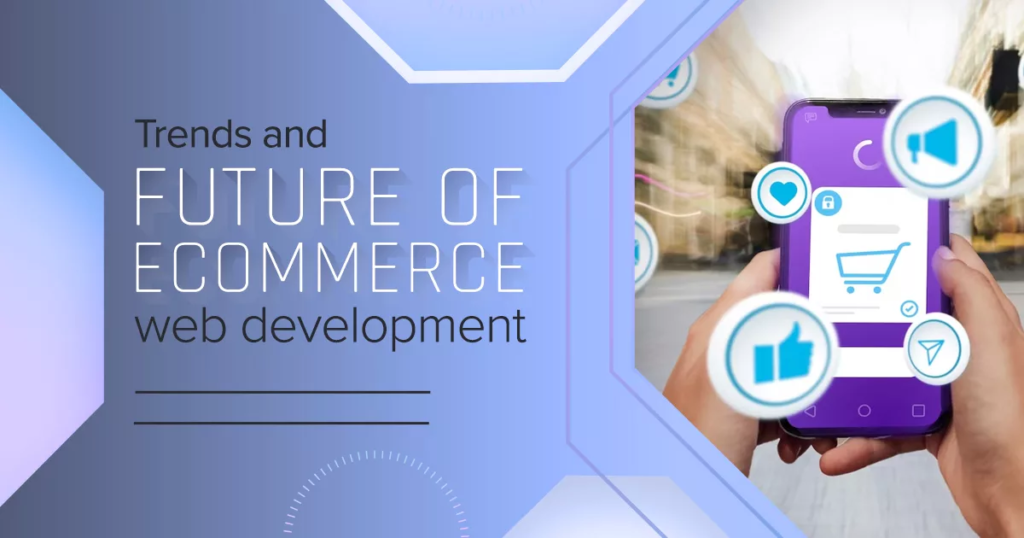Introduction:
In the rapidly evolving landscape of e-commerce, the success of online stores hinges on their ability to adapt to emerging technologies and consumer trends. As we step into the future, web development plays a pivotal role in shaping the digital storefront experience. From augmented reality (AR) to artificial intelligence (AI), the possibilities for innovation are boundless. In this blog, we delve into the cutting-edge innovations in web development that are revolutionizing online stores and paving the way for the future of e-commerce.

- Augmented Reality (AR) Shopping Experiences:
One of the most exciting advancements in e-commerce web development is the integration of augmented reality (AR) technology. AR allows shoppers to visualize products in their real-world environment before making a purchase decision. For instance, furniture retailers can offer AR-powered tools that enable customers to see how a sofa would look in their living room or how a lamp would fit on their bedside table. This immersive shopping experience not only enhances customer engagement but also reduces the likelihood of returns, leading to higher conversion rates and customer satisfaction.
- Personalized Shopping Recommendations:
Gone are the days of one-size-fits-all product recommendations. With advancements in AI and machine learning algorithms, online stores can now offer highly personalized shopping experiences tailored to each individual customer. By analyzing past purchase behavior, browsing history, and demographic information, e-commerce websites can curate product recommendations that resonate with the unique preferences and interests of each shopper. This level of personalization not only increases the likelihood of conversion but also fosters customer loyalty and repeat business.
- Voice Commerce Integration:
The rise of voice-activated smart assistants like Amazon Alexa and Google Assistant has ushered in a new era of voice commerce. Web developers are leveraging voice recognition technology to enable hands-free shopping experiences on online stores. Customers can simply use voice commands to search for products, add items to their cart, and complete transactions seamlessly. Voice commerce integration not only enhances convenience for shoppers but also opens up new opportunities for e-commerce businesses to tap into the growing market of smart speaker users.
- Blockchain – Powered Supply Chain Transparency:
Transparency and trust are paramount in e-commerce, especially when it comes to the origin and authenticity of products. Blockchain technology offers a solution to this challenge by providing a decentralized and immutable ledger that records every transaction along the supply chain. Web developers are exploring ways to integrate blockchain-powered solutions into online stores to ensure greater transparency and traceability of products. By leveraging blockchain technology, e-commerce businesses can build trust with consumers and differentiate themselves in a crowded marketplace.
- Headless Commerce Architecture:
Traditional e-commerce platforms often come with limitations in terms of flexibility and scalability. Enter headless commerce architecture – a decoupled approach to e-commerce web development that separates the frontend presentation layer from the backend functionality. This allows developers to build highly customized and responsive frontends using modern frameworks like React or Vue.js, while still leveraging the robust backend capabilities of e-commerce platforms like Shopify or Magento. Headless commerce architecture empowers online stores to deliver fast, engaging, and seamless shopping experiences across various devices and touchpoints.
- Enhanced Payment Security:
As the volume of online transactions continues to rise, so does the risk of payment fraud and cyber attacks. Web developers are prioritizing enhanced payment security measures to safeguard sensitive customer information and prevent unauthorized access. This includes implementing advanced encryption protocols, multi-factor authentication, and tokenization techniques to secure online transactions. By investing in robust payment security infrastructure, e-commerce businesses can instill confidence in their customers and mitigate the risk of data breaches.
Conclusion:
The future of e-commerce is brimming with possibilities, thanks to the innovative advancements in web development. From augmented reality (AR) shopping experiences to blockchain-powered supply chain transparency, online stores are undergoing a profound transformation that promises to redefine the way we shop and interact with brands. By embracing these cutting-edge technologies and trends, e-commerce businesses can stay ahead of the curve and deliver unparalleled shopping experiences that delight customers and drive business growth in the digital age.
